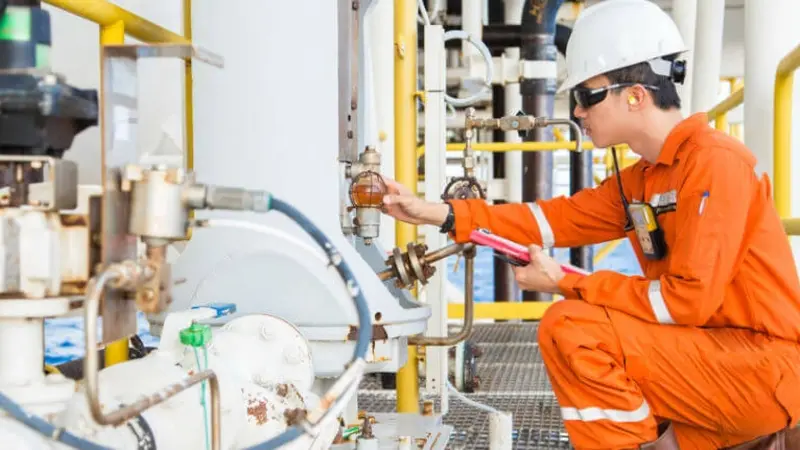Pump reliability is more than just a maintenance concern in industrial operations—it directly impacts productivity, safety, and long-term operational costs. Depending on the process it supports, a single pump failure can lead to downtime, equipment damage, or even safety risks. As systems become more complex, ensuring consistent pump performance is essential to keeping industrial operations running efficiently.
Modern pump reliability focuses on proactive maintenance, system monitoring, and choosing components designed for durability. Distributors like C&B Equipment help facilities access technologies that support these goals. That’s why companies across every sector are doubling down on pump reliability by adopting robust asset management plans and high-quality technical solutions like Summit Pump products. Incorporating reliable equipment from the start helps reduce unplanned failures, optimize energy use, and extend service intervals, ensuring that pumps contribute to, rather than compromise, overall system performance.
Selecting the Right Pump for Your Process
Pump selection is crucial for long-term reliability, but the wrong choice can lead to rapid wear and energy inefficiency. Teams should consider flow rates, pressures, chemical compatibility, and environmental factors. For instance, abrasive slurries need durable internals, while high temperatures may require special materials. Selecting pumps that can handle varying conditions without excessive cycling is also important. Input from site experience, manufacturer guides, and third-party reviews is essential, and collaboration between engineering and operations can ensure better performance and reduce future issues.
Preventive Maintenance Strategies That Work
Preventive maintenance sets companies apart by minimizing potential problems. Most pump failures stem from gradual issues like shaft misalignment or worn seals rather than unpredictable factors. Key practices include regular visual inspections, vibration checks, and temperature monitoring, supported by scheduled component swaps and thorough record-keeping. Innovative maintenance leaders often use mobile apps alongside checklists to ensure thoroughness. Training technicians to identify unusual noises or pressure changes can also prevent significant breakdowns.
How Smart Monitoring Improves Pump Performance
Today’s industrial pumps do more than move fluids; they communicate through real-time sensors that monitor metrics like temperature, vibration, and energy consumption. These insights are crucial, as even minor anomalies can trigger alerts for early interventions, such as a slight increase in vibration indicating a failing bearing or erratic flow suggesting a blockage. This intelligent monitoring reduces equipment downtime, enhances worker safety, and lowers maintenance costs. Additionally, it enables predictive analytics to identify trends and recommend optimal maintenance windows, moving beyond fixed schedules and reactive repairs.
Top Causes of Pump Failure—And How to Avoid Them
- Cavitation: This occurs when vapor bubbles form in the pumping liquid and then violently collapse, damaging internal metal surfaces. Cavitation is often the result of improper suction conditions, and mitigation starts with sound piping design, regular inspection, and high-quality monitoring systems.
- Seal and Bearing Failures: A leading cause of leaks and mechanical breakdowns. Adhering to lubrication schedules, ensuring accurate installation, and choosing premium-grade materials dramatically extend service life.
- Overheating and Running Dry: Flow interruptions, clogged intake lines, or a lack of liquid can cause thermal damage. Safeguards like flow monitors and automatic shut-offs help avert these destructive scenarios.
- Improper Operation: Operator error, such as rapid start-stops or running outside of the pump’s design parameters, often leads to premature failures. Ongoing training, clear documentation, and visual aids at control stations help teams avoid these pitfalls.
It is vital to regularly review the underlying causes of failure and adapt operational procedures. Facility managers who track causes and implement corrective actions report significant long-term reductions in equipment outages.
Building a Culture of Reliability in Industrial Teams
The most reliable facilities aren’t just those with the best technology—they’re driven by teams committed to proactive maintenance and clear communication. Advanced systems and digital dashboards only deliver results when operators, engineers, and technicians are empowered to act on the information. Open reporting processes, frequent training sessions, and a willingness to learn from every incident (big or small) establish a strong culture of reliability. Many industry leaders recognize and reward team members who notice and address minor problems before they become critical. Engaging everyone in the reliability conversation—from the control room to the C-suite—helps ensure the organization values safety, sustainability, and continuous improvement.
